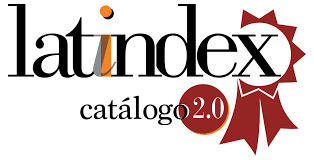Afinal, o lítio é um teratógeno relevante?
DOI:
https://doi.org/10.25118/2763-9037.2013.v3.319Palavras-chave:
lítio, gravidez, teratogenicidadeResumo
O lítio já foi apontado nos anos de 1980 como um forte teratógeno. Uma revisão de estudos posteriores realizada nos anos 1990 estimou que o risco de malformações cardíacas era menor do que o relatado e deveria estar entre 0,9% a 12%. Este artigo revisa os dados destes estudos e assinala possíveis vieses que podem colocar em dúvida as estimativas aceitas na atualidade. Concluiu-se que, considerando as sérias limitações dos estudos retrospectivos, caso-controle e prospectivos sobre este tema, o potencial
teratogênico do lítio não deve ser desprezado e, portanto, é uma medicação que deve ser prescrita com muito critério durante a gravidez. Quando houver a exposição, é aconselhável realizar uma ecocardiografia fetal e neonatal para excluir a possibilidade de anomalias cardíacas. Antipsicóticos e lamotrigina podem ser possíveis alternativas para o tratamento do transtorno bipolar durante a gravidez.
Downloads
Métricas
Referências
Barbui C, Conti V, Purgato M, Cipriani A, Fortino I, Rivolta AL, Lora A. Use of antipsychotic drugs and mood stabilizers in women of childbearing age with schizophrenia and bipolar disorder: epidemiological survey. Epidemiol Psychiatr Sci. 2013; 1:1-7.
• 2. Akabaliev V, Sivkov S, Mantarkov M, Ahmed-Popova F. Minor physical anomalies in patients with bipolar I disorder and normal controls. J Affect Disord. 2011 ;135:193-200.
• 3. Vajda FJ, O’Brien TJ, Graham J, Lander CM, Eadie MJ. Associations between particular types of fetal malformation and antiepileptic drug exposure in utero. Acta Neurol Scand. 2013;6. (Epub ahead of print).
• 4. Fountoulakis KN, Kasper S, Andreassen O, Blier P, Okasha A, Severus E, Versiani M, Tandon R, Möller HJ, Vieta E. Efficacy of pharmacotherapy in bipolar disorder: a report by the WPA section on pharmacopsychiatry. Eur Arch Psychiatry Clin Neurosci. 2012;262:1-48.
• 5. Viguera AC, Nonacs R, Cohen LS, Tondo L, Murray A, Baldessarini RJ. Risk of recurrence of bipolar disorder in pregnant and nonpregnant women after discontinuing lithium maintenance. Am J Psychiatry. 2000;157:179-84.
• 6. Osiro S, Tiwari KJ, Mathenge N, Rodriguez JR, Tubbs RS, Loukas M. When Lithium Hurts: A Look at Ebstein’s Anomaly. Cardiol Rev. 2012; 24. [Epub ahead of print].
• 7. Weinstein MR. The international register of lithiumbabies. Drug Inf J 1976; 10:94–100.
• 8. Weinstein MR, Goldfield M. Cardiovascular malformations with lithium use during pregnancy. Am J Psychiatry. 1975;132:529-31.
• 9. Weinstein MR. Lithium treatment of women during pregnancy and in the post-delivery period. In: Johnson FN, editor. Handbook of lithium therapy. Lancaster England: MTP, 1980: 421–429.
• 10. Yacobi S, Ornoy A. Is lithium a real teratogen? What can we conclude from the prospective versus retrospective studies? A review. Isr J Psychiatry Relat Sci. 2008;45:95-106.
• 11. Cohen LS, Friedman JM, Jefferson JW, Johnson EM, Weiner ML. A reevaluation of risk of in utero exposure to lithium. JAMA. 1994;271:146-50.
• 12. Viguera AC, Cohen LS, Baldessarini RJ, Nonacs R. Managing bipolar disorder during pregnancy: weighing the risks and benefits. Can J Psychiatry. 2002 ;47:426-36.
• 13. Cunniff CM, Sahn DJ, Reed KL, Chambers CC, Johnson KA, Jones KL. Pregnancy outcome in women treated with lithium. Teratology Society Abstracts 1989;39:447-448.
• 14. Jacobson SJ, Jones K, Johnson K, Ceolin L, Kaur P, Sahn D, Donnenfeld AE, Rieder M, Santelli R, Smythe J, Pastuszak A, Einarson T, Koren G. Prospective multicentre study of pregnancy outcome after lithium exposure during first trimester. Lancet 1992;339:530-534.
• 15. Diav-Citrin O, Shechtman S, Tahover E, Arnon J, Ornoy A. Pregnancy outcome after in-utero exposure to lithium: a prospective controlled cohort study. Ab- stract presented in the 46th annual meeting of the American Teratology Society, Tucson, Arizona. June, 2006.
• 16. Warner JP. Evidence-based psychopharmacology 3. Assessing evidence of harm: What are the teratogenic effects of lithium carbonate? Br Assoc Psychopharm 2000;14:77-80.
• 17. Linask KK. The heart-placenta axis in the first month of pregnancy: induction and prevention of cardiovascular birth defects. J Pregnancy. 2013;2013:320413. Acessado em: http://www.hindawi.com/journals/jp/2013/320413/
• 18. Horton S, Tuerk A, Cook D, Cook J, Dhurjati P. Maximum Recommended Dosage of Lithium for Pregnant Women Based on a PBPK Model for Lithium Absorption. Adv Bioinformatics. 2012;2012:352729. Acessado em: http://www.hindawi.com/journals/abi/2012/352729/
• 19. Epstein RA, Bobo WV, Shelton RC, Arbogast PG, Morrow JA, Wang W, Chandrasekhar R, Cooper WO. Increasing use of atypical antipsychotics and anticonvulsants during pregnancy. Pharmacoepidemiol Drug Saf. 2012;5. [Epub ahead of print].
Downloads
Publicado
Como Citar
Edição
Seção
Licença

Este trabalho está licenciado sob uma licença Creative Commons Attribution-NonCommercial 4.0 International License.
Debates em Psiquiatria permite que o (s) autor (es) mantenha(m) seus direitos autorais sem restrições. Atribuição-NãoComercial 4.0 Internacional (CC BY-NC 4.0) - Debates em Psiquiatria é regida pela licença CC-BY-NC
































